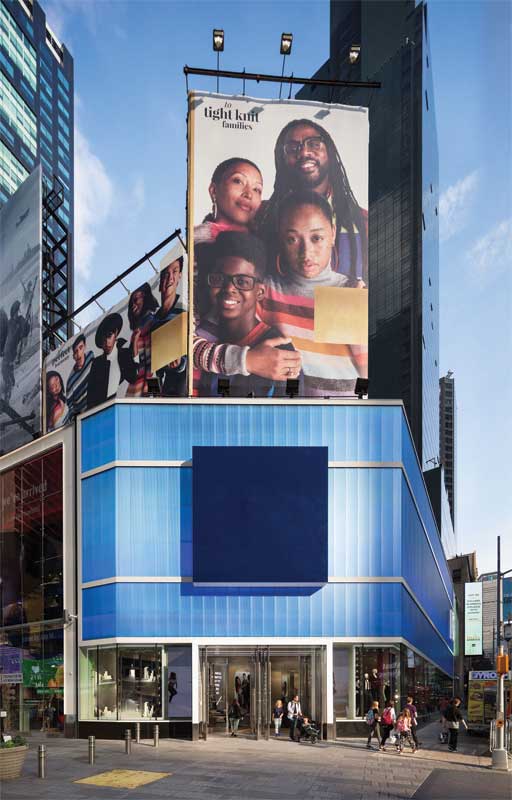
Photo courtesy Vanni Archive Architectural Photography
Daylighting capabilities
Access to daylighting provides recognized benefits to health and wellness, accuracy, and productivity. Research has shown high job satisfaction, and higher test scores and sales in buildings designed to maximize daylighting. Reliance on daylighting also decreases the demand on electric lighting, which reduces the associated energy costs and emissions, as well as resource consumption. (See the Leadership in Energy and Environmental Design (LEED) 2009 reference guide at www.usgbc.org/resources/eqc81-daylight-and-views-addenda.)
To capitalize on the advantages of daylight, careful attention must be given to the glazing material’s insulation and thermal performance, diffusion, glare reduction, light transmittance, and ultraviolet (UV) resistance.
Insulation and thermal performance
One of the most prevalent complaints building owners and facility managers receive relates to occupants being too hot or too cold. This is especially true of tenants seated directly next to a window or other daylight opening. They want the daylight, but they also expect an ideal interior temperature. The high insulating and thermal performance of polycarbonate glazing systems can accentuate the benefits of daylighting, improve occupants’ comfort, and contribute to owner’s energy savings and overall building value.
U-value and R-value
Glazing materials’ insulating properties are measured as a U-value (also known as U-factor), indicating the flow of heat gain or loss with respect to the difference in outdoor and indoor temperatures. The lower the U-value, the better the insulating ability.
The standard procedure for determining U-values in a fenestration product—such as a translucent exterior vertical wall, window, door, or other daylighting assembly—is detailed in the American National Standards Institute/National Fenestration Rating Council (ANSI/NFRC) 100-2017, Procedure for Determining Fenestration Product U-factors (July 2017). ANSI/NFRC 100 relies on software to evaluate individual elements of the specified fenestration product’s frame, edge of glazing, and center of glazing. The computer simulation then calculates the product’s U-value for winter conditions of 21 C (70 F) on the building’s interior and -18 C (0 F) for the exterior temperature.
When specifying thermal performance in translucent wall systems, an R-value may be noted instead of a U-value. Where U-value measures the rate of heat transfer and a lower number indicates better performance, the R-value measures resistance to heat transfer and a higher number indicates better performance. R-values should be associated with a width measurement. If different materials comprise the total width, then an R-value should be noted for each material’s width; adding these together will provide an overall estimated value. That said, an R-value does not account for all of the daylighting assembly’s components and facets represented in U-value calculations.
For a large translucent polycarbonate wall system, the framing around the perimeter becomes negligible in a U-value computation, on a percentage of total area. On average, a U-factor of 0.26 and an R-value of 3.84 can be expected for a polycarbonate glazing system with a thickness of 25-mm (1-in.).

Photo courtesy Astula, Inc.
In contrast, a U-factor of 0.48 and an R-value of 2.08 would be typical of a double-pane, insulated glass unit (IGU) of the same thickness. Fiberglass-reinforced plastic (FRP) assemblies can achieve better thermal performance, but light transmittance values suffer (read discussion regarding light transmittance).
Solar heat gain coefficient
Solar heat gain refers to the increase in thermal energy of a space as it absorbs incident solar radiation. The solar heat gain coefficient (SHGC) is a ratio of transmitted solar radiation to incident solar radiation in a daylighting assembly, expressed as a number between 0.0 and 1.0. A lower number indicates less transmission of solar heat.
ANSI/NFRC 200-2017, Procedure for Determining Festration Product U-factors, prescribes standard test protocols for measurement of SHGC and visible transmittance at normal incidence. The computer simulation calculates summer conditions of 29 C (75 F) on the building’s interior and 32 C (90 F) for the exterior temperature.
International Energy Conservation Codes (IECC) prescribe maximum SHGCs and minimum U-values required by geographically-mapped climate zones. Deviations from these standards are allowed under the codes if the performance method is followed.
For translucent exterior vertical wall applications, building codes frequently require a maximum of 0.25 to 0.45 SHGC, depending on the project’s location. Lower SHGCs usually are required in warmer climates. There is no distinction between glazing materials; a wall system with polycarbonate glazing would need to meet the same requirements as one using IGUs.
Keeping the unwanted heat outside in warmer climates and the cold outside in cooler climates not only maintains a more comfortable interior for the occupants, it also provides a more energy-efficient building. HVAC load reduction can save owners on both equipment costs and peak usage rates. Some utility providers also may offer credits or rebates to building owners who achieve significant reductions and continued efficiency.





Where can I buy this tongue and groove polycarbonate its exactly what I want